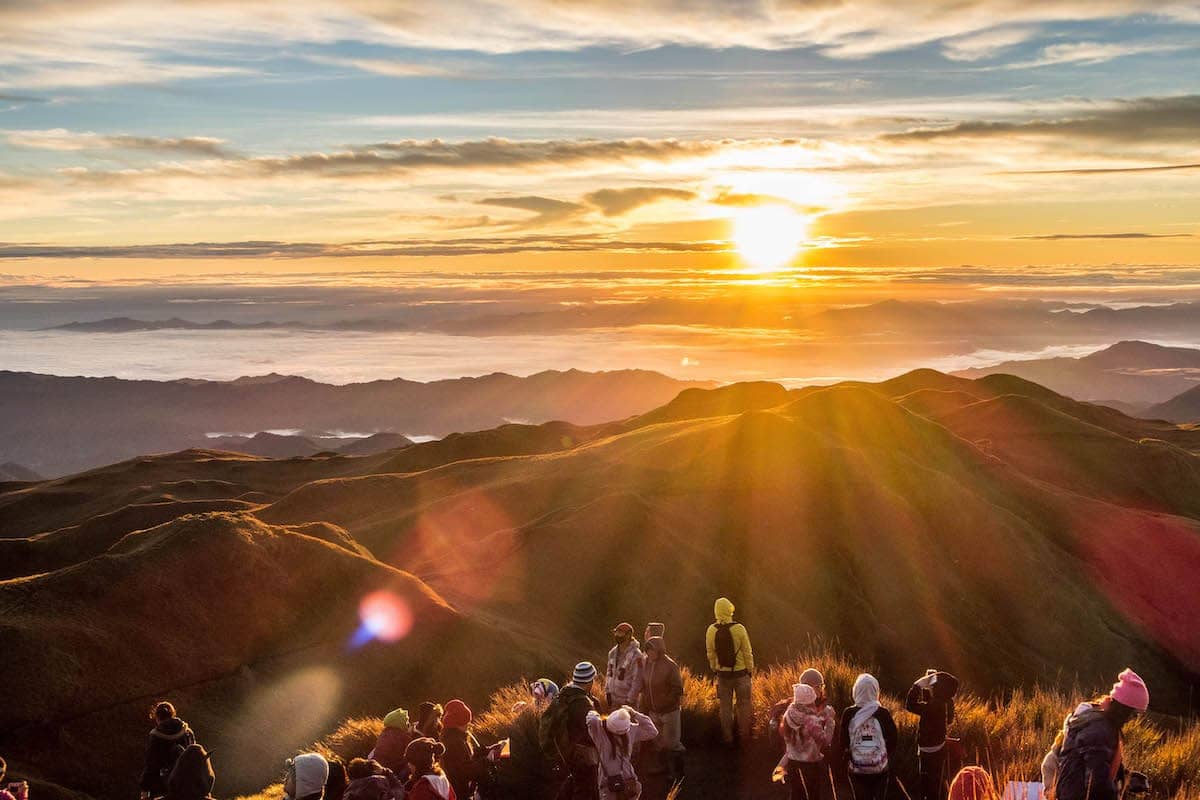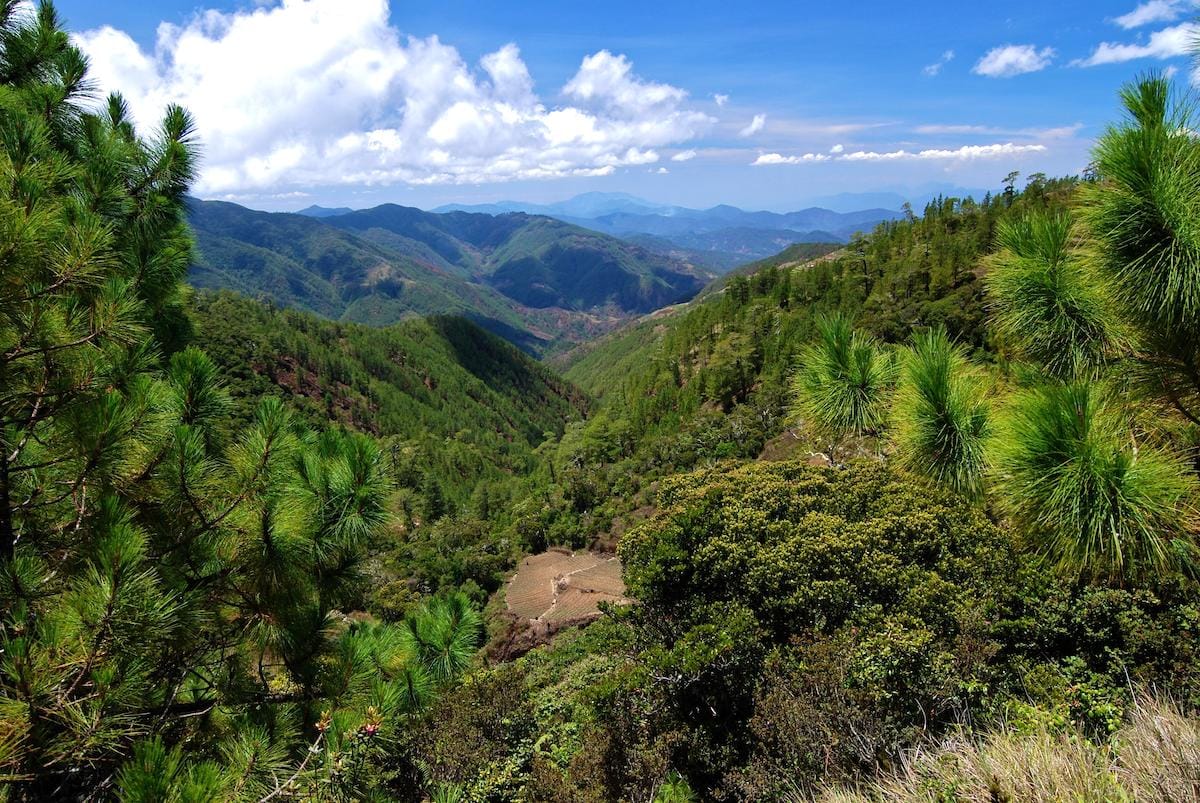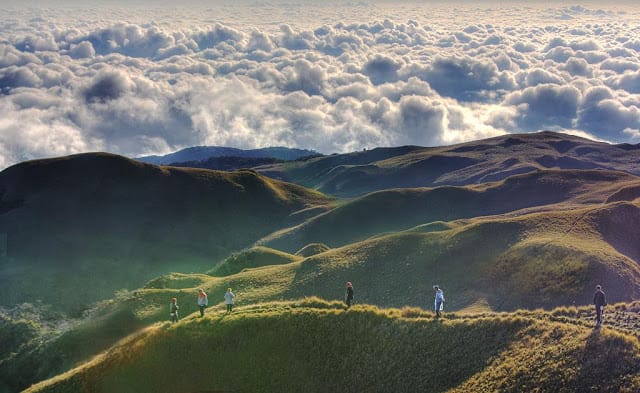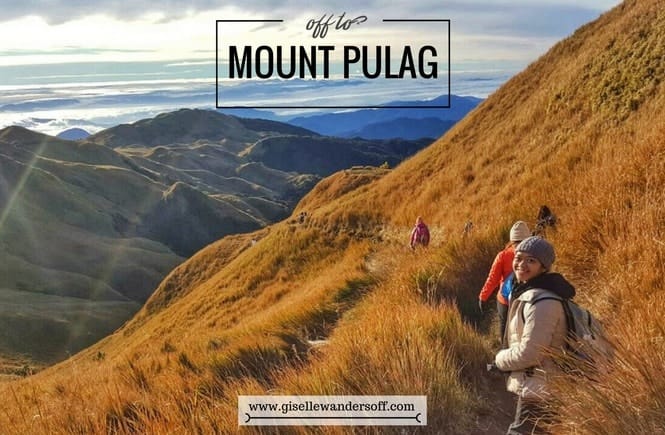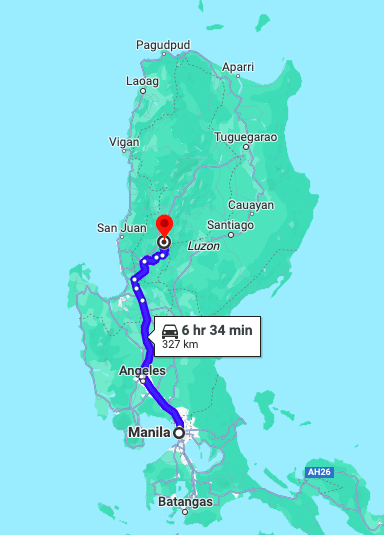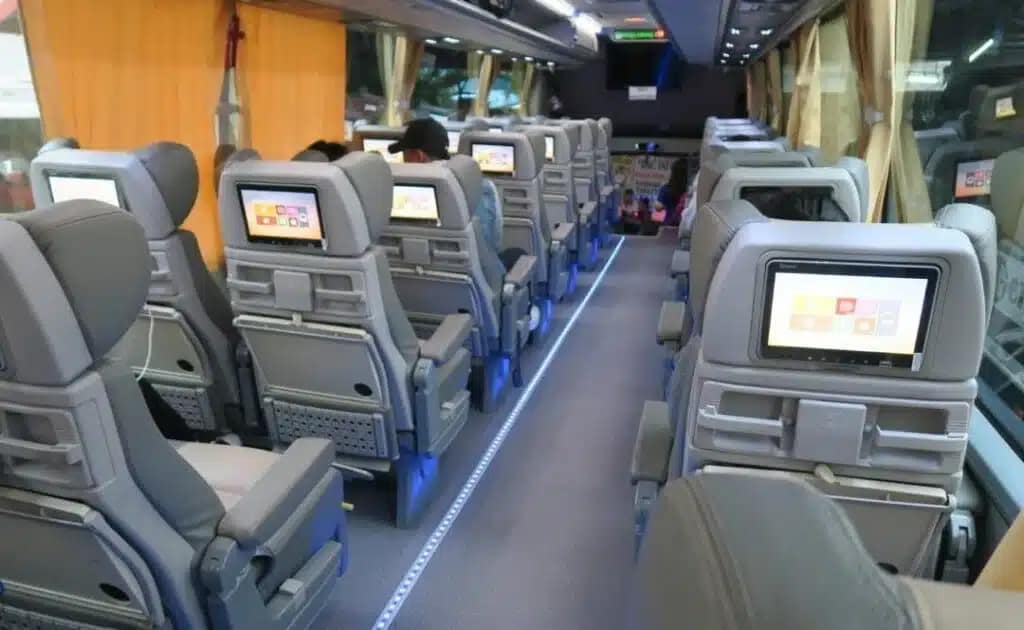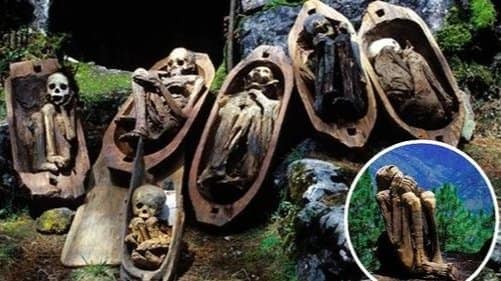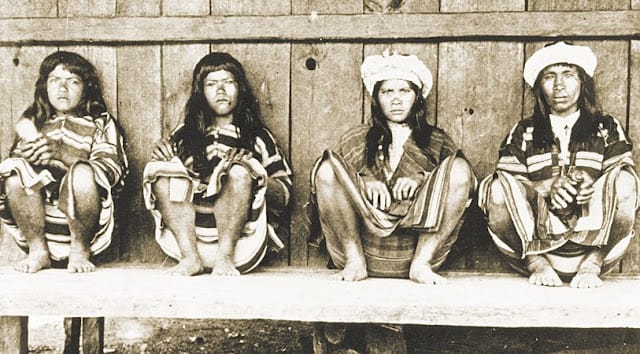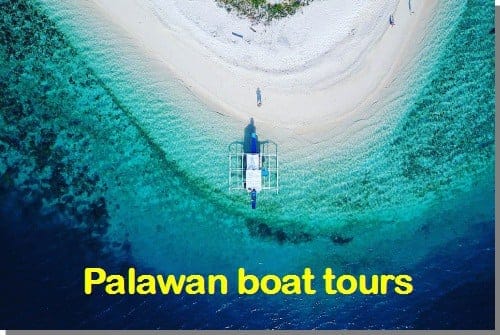Introduction: Embracing the Clouds at Mount Pulag
 Rising majestically in Northern Luzon, Mount Pulag is the third highest peak in the Philippines and a sought-after destination for both novice and experienced mountaineers. Within its bounds, the Mount Pulag National Park showcases a diverse ecosystem, from mossy forests to the iconic grassland summit, making it an ecological wonder in the heart of the Cordilleras.
Rising majestically in Northern Luzon, Mount Pulag is the third highest peak in the Philippines and a sought-after destination for both novice and experienced mountaineers. Within its bounds, the Mount Pulag National Park showcases a diverse ecosystem, from mossy forests to the iconic grassland summit, making it an ecological wonder in the heart of the Cordilleras.
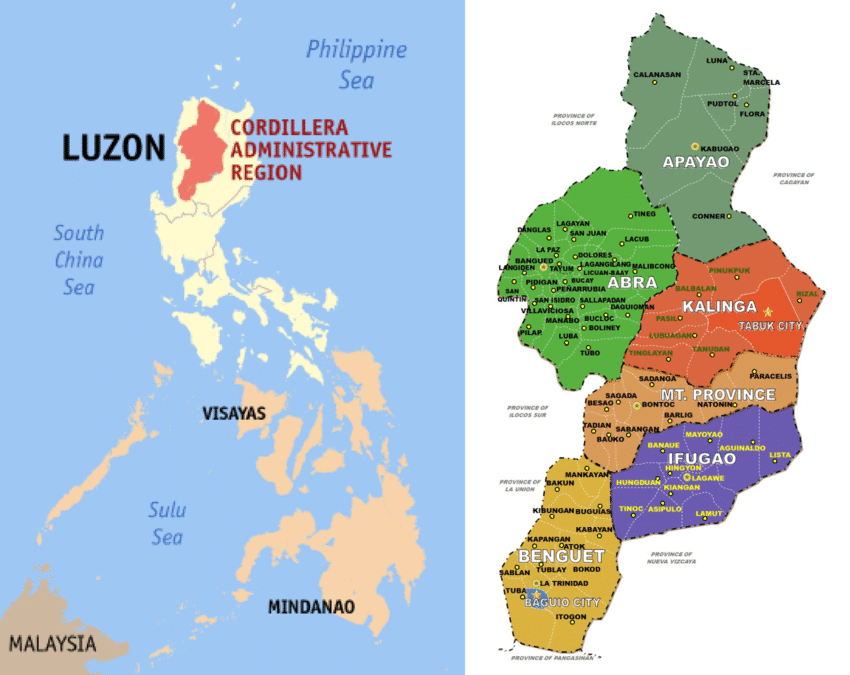
Mount Pulag’s Unique Ecosystems: A Journey through Different Altitudes
Traversing Mount Pulag provides a step-by-step immersion into varying ecosystems.
- Tropical Rainforest: The base of the mountain is teeming with vibrant flora and fauna, offering trekkers a dense green sanctuary.
- Mossy Forest: Ascend further, and the environment transforms into a mystical moss-covered haven, often shrouded in fog.
- Grassland Summit: The peak unveils a sea of dwarf bamboo grass, giving Mount Pulag its signature golden crown during sunrise.
The Sea of Clouds: A Heavenly Phenomenon
One of the main attractions of Mount Pulag is its ethereal “sea of clouds” phenomenon. On fortunate mornings, trekkers are treated to a surreal vista of clouds blanketing the landscapes below, making one feel as if they are standing above the heavens.
Rich Biodiversity: Home to Rare Species
Mount Pulag National Park serves as a sanctuary for diverse wildlife. From the Philippine Deer to the threatened Luzon Pygmy Fruit Bat, the park is a haven for researchers and nature enthusiasts alike.
Trekking Routes: Choices for Every Adventurer
Several trails cater to different skill levels of trekkers:
- Ambangeg Trail: Often recommended for beginners, this path provides a gradual ascent to the summit.
- Akiki Trail: Dubbed the “Killer Trail,” Akiki offers a more challenging climb with rewarding vistas.
- Tawangan and Ambaguio Trails: Less frequented, these paths promise solitude and close encounters with nature.
Preservation and Responsibility: Leave No Trace
The rising popularity of Mount Pulag necessitates responsible trekking. Adhering to “Leave No Trace” principles ensures the preservation of this natural treasure for future generations.
Getting to Mount Pulag
The jump-off point for most treks is the town of Kabayan in Benguet. It is accessible from Baguio City, the Summer Capital of the Philippines, via public transportation or private vehicles.
Journey to Kabayan, Benguet: Gateway to Mount Pulag and Rich Ibaloi Heritage
1. By Private Vehicle:
If you’re driving from Manila:
- Start on the North Luzon Expressway (NLEX).
- Proceed onto the Subic-Clark-Tarlac Expressway (SCTEX) heading towards Tarlac.
- From SCTEX, transition to the Tarlac-Pangasinan-La Union Expressway (TPLEX).
- Take the exit for Rosario, La Union, and follow the national road going up to Baguio City.
- From Baguio City, follow the Phil. Highway-120 which passes through Itogon, and continue towards Kabayan.
- The entire drive can take around 6-7 hours, depending on traffic and weather conditions.
2. By Public Bus:
To reach Kabayan by public transportation:
- Manila to Baguio: Several bus companies operate daily trips from Manila to Baguio. Popular options include Victory Liner, Genesis Bus, and Joy Bus. Terminals are mostly located in Cubao, Quezon City, and Pasay.
- Baguio to Kabayan: From the Baguio Terminal, there are jeepneys and mini-buses heading towards Kabayan. Remember to check schedules as trips might not be as frequent, and it’s advisable to start your journey early in the day.
3. What to Expect Upon Arrival:
Kabayan is not just the jump-off point to Mount Pulag. It’s also home to the Kabayan Mummies or Fire Mummies. These preserved remains, which are located in Timbac Caves among other sites, offer a glimpse into the rich Ibaloi culture and tradition.
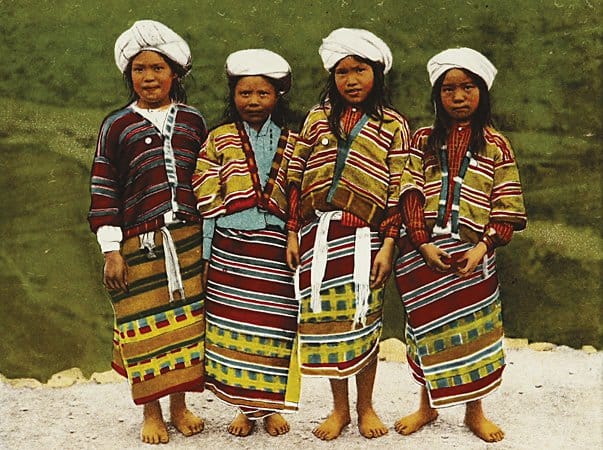
4. Best Time to Visit:
The best time to visit Kabayan, especially if planning to trek Mount Pulag, is during the dry season, from November to April. However, even during these months, nighttime and early morning temperatures can be chilly, so it’s essential to pack appropriately.
5. Travel Tips:
- Kabayan is a significant cultural and natural site. Always respect local customs, traditions, and environmental guidelines.
- If trekking Mount Pulag, ensure you’ve secured necessary permits and are accompanied by an official guide.
- Mobile signal might be spotty in certain areas, so inform family or friends about your itinerary beforehand.
Conclusion: Mount Pulag, A Symphony of Nature
Kabayan, Benguet, is a blend of natural beauty and cultural richness. Whether you’re seeking mountain adventures or a deeper understanding of the Philippines’ indigenous cultures, Kabayan promises a memorable experience. Mount Pulag National Park isn’t just about reaching its summit. It’s about immersing oneself in the melodies of nature, from the whispers of its forests to the golden glow of its peak. For those yearning for a transcendent nature experience in the Philippines, Mount Pulag awaits.
For more adventure you can also check out Palawan, the jewel of the Philippines, a beautiful remote area where we organize multiday boat tour expeditions off the beaten path.
Experience the thrill of island hopping in the Philippines
FAQs
Where is Mount Pulag located?
Nestled majestically in Northern Luzon, Mount Pulag is a crown jewel of the Philippines, gracing the provinces of Benguet, Ifugao, and Nueva Vizcaya.
What is Mount Pulag best known for?
Ah, Mount Pulag! The “Playground of the Gods” is renowned for its mesmerizing sea of clouds and the ethereal sunrise that paints the heavens at dawn.
Why should we visit Mount Pulag?
To bask in nature’s grandeur! Mount Pulag is a breathtaking escape, offering panoramic vistas, rich biodiversity, and a chance to walk above the clouds. A journey for the soul!
How long is the hike to Mount Pulag?
Ready your hiking boots! The trek varies depending on the trail, but the popular Ambangeg route takes about 4-5 hours. Each step, a step closer to the sky!
What mountain range is Mount Pulag?
Mount Pulag proudly stands as the highest peak of the grand Cordillera mountain range, a tapestry of green and gold that stretches across Northern Luzon.
Can you climb Mt. Pulag?
Absolutely! With its welcoming trails and captivating vistas, Mount Pulag beckons both seasoned mountaineers and enthusiastic beginners to conquer its heights.
Can a beginner climb Mt. Pulag?
Certainly! While Mount Pulag presents a challenge, its friendly trails like Ambangeg are perfect for budding adventurers. Just ensure you’re prepared and in good company!
Can I go to Mt Pulag alone?
While solo treks are thrilling, for safety and regulations, it’s recommended to join organized groups or have a local guide, especially if you’re a first-timer.
When should I visit Mt Pulag?
Aim for the dry months of November to May! While the park is open year-round, these months offer clearer skies and a better chance to dance among the clouds.
What is the coldest temperature in Mount Pulag?
Bundle up! Mount Pulag’s temperatures can drop to a chilly 0°C (32°F) or even lower during the peak months of January and February.
Is there a signal in Mt Pulag?
Nature’s calling, not your phone! While there might be sporadic signal spots, it’s best to anticipate limited connectivity and truly unplug.
What should I wear in Mt Pulag?
Layer up! Don lightweight but warm clothing, a sturdy pair of hiking boots, gloves, and a hat. The temperatures can be quite nippy, especially during nighttime and early mornings.
Does Mount Pulag have snow?
While Mount Pulag boasts chilly temperatures, it doesn’t receive snow. However, its frosted grasslands and misty ambiance give it a dreamy, winter wonderland feel!
SEO Keywords: Mount Pulag National Park, Northern Luzon, Cordilleras, mossy forest, grassland summit, sea of clouds, biodiversity, Ambangeg Trail, Akiki Trail, Kabayan, Benguet, Leave No Trace, Philippine mountaineering.
Mount Pulag Private Tour from Banaue – FAQ & Travel Guide
Check out our response here.
Booking - Private Tours
We are a family operation and would love to show you around our beautiful country. We primarily focus on private tours catering to clients interested in a custom and unique experience. Otherwise we offer lots of free information on these pages for budget travelers. Feel free to contact us so we can design the perfect package for you!
Home » Luzon » Explore »

Good recommandation for the overnight stay.
The crew was very helpful
and they prepared very nice meals for us.
Strongly recommended
I wanted to surprise my girlfriend with a special engagement in beautiful El Nido!!
Melasel arranged everything for me and had so many great suggestions and knowledge of how to make this a magical day! I was super worried because it is difficult to arrange such an important event when you live on the other side of the world! But Mel was amazing and understood exactly what I wanted! And went out of her way to accommodate all my requests!
She even had a clever story to tell my girlfriend to cover the photographer being with us all day!
On the day the weather was very rainy with many showers. Mel and Rene were in constant contact with me with plan B and even contacted our hotel to discuss options of hosting the proposal there. Completely above and beyond what I paid for.
Luckily in the end the weather gave us a small window and Mel set everything up beautifully on a sand bar floating in the middle of crystal clear waters surrounded by limestone islands with stunning rocky formations.
Island Hopping in the Philippines somehow peered into my brain and delivered a perfect replica of the proposal I had in my head.
It was simply perfect down to the smallest detail! Thank you so much, I cannot recommend you guys enough!!
As most of people usually feel, once your money has been transferred out to someone you do not know, you probably frustrated that your money would not be able to be refunded.
But not in my experience. I dont need to be worry, the owner refunded me the money he has received (minus the bank fees). He promised to refund me and he did it. It was around 18.700 Pesos.
So, eventhough i didn't manage to go with the tour, but i am really satisfied with their legitimate and great business practice. Hopefully, people will try their services and not worry about their legit business!
Thanks a lot!
First of all the booking part was really simple. I organized this trip to the Philippines last minute for my family (my parents and my uncles) but Karel answered all my questions very quickly and really made everything easier for me. It was an incredible experience. Albert, our tour leader, is a wonderful guy, always smiling and ready to help us. They assisted us in everything and really took care of making everything go smoothly. The accommodation on the islands is as spartan as you expect but the location of each hut alone is worth the trip. The wonder of nature was then added to the goodness of cuisine. It's really difficult to argue how you can cook all that goodness on a boat.
If you are looking for an authentic experience, in contact with nature, off the beaten track, this company's private expedition is certainly for you.
Super ultimate tour is the best with Kayangan and barracuda lake, twin lagoons (my favorite), coral garden (blue fabulous coral) were the best. It’s really worth it to pay for private tour (3500 to 4000 PHP). You will also have to pay for entrance fees (150 to 200PHP by location) and eventually shopping at the market - must do (count 300 for 2 for fish, pork, fruits and vegetables, water).
Based on the comments, I contacted Mel.
Very responsive, very efficient and perfect organization.
The on-board staff were very friendly and very helpful.
And I'm not even talking about the meal on board...a marvel.
In all fairness, this excursion will remain an excellent memory and I cannot recommend Mel and his team highly enough.
A big thank-you.
If you love camping this is definitely a tout you should do, it has been the highlight of our trip!!
You may also like:
We are a family operation managing private custom boat tours in the beautiful Palawan area, and are happy to help travelers with their plans through the country, having traveled a lot of it ourselves and planning to visit it all.
Submit your review | |
Paying it forward with some details on how to organize a semi-DIY trip up Pulag via Akiki via Kabayan on the fly! (We had a lot of difficulty finding information online, so I hope this helps someone else)
My partner and I weren't sure whether we would hike Mt. Pulag or not, and so we just arrived in Kabayan (which is closest to the Akiki trail DENR) with our travel packs with a rainjacket and a fleece sweater and the hope that everything would come together!
GUIDE: We stayed at the pine-cone lodge and they helped us to find a guide (there seemed to be some kind of training happening that day and so she actually tracked us down!) Having a guide is mandatory and you need to pay environmental fees as well. All this is done at the DENR station before you start the hike.
GEAR: Sleeping bags: Our guide rented us her sleeping bags and she suggested that we start early and sleep in the hut at the Marlboro hills campground. Our understanding was that we would need to go to the Ambageng DENR to rent tents and sleeping bags but this is about an hour away from Kabayan, so difficult to get there and back if you're just there a few days. If you hiked Ambageng this wouldn't be a problem. Alternatively, you can try to coordinate with one of the Mt Pulag guide groups on facebook and just rent their gear to go to Akiki. We tried to do this but due to lack of wifi we didn't get to follow-up with them. Cheaper than paying for a full package.
CLOTHES: There were tons of second-hand clothing stores in Kabayan. I think we bought hats, gloves, socks, extra layer of fleece and leggings for about 5$ CAD. Not bad. We donated it all to the lodge when we left because we did not wish to carry it around after our trek.We also picked up headlamps which you will need to trek in the dark.
FOOD: We paid our guide for butane and she allowed us to use her stove. There are lots of food shops in Kabayan. We kept it simple with peanut butter and jam sandwiches, pancit (instant noodles), some apples and granola bars. Make sure to have 2 litres of water, although there were LOTS of places to refill water along the way.
THE TREK: The hike itself. The Akiki trail ("the killer trailer") is definitely all up hill but very doable if you are in decent shape. We started hiking around 7:45 and arrived at the Marlboro hills site at 11. Plenty of time to relax, play with the cows before going to sleep early. We got up at 2AM and had breakfast and started our hike to the summit. We arrived at 4:30 AM and had to duck into the grasses for warmth a bit while we waited for the sunrise. The cold is no joke so dress appropriately! But the views are amazing! Had we had tents we could have slept at the closer campground and gotten to sleep in a bit haha.
GETTING THERE: We left our bags at the Pine cone lodge. We took a trike to the DENR station. We exited the hike via the Ambageng trail. We ended around 9AM and went and ate some lunch. We rode on the back of motorbikes to get to a bus stop to catch a bus going back to Kabayan. (I believe it was coming from Baguio) We had to wait quite a while but it was much cheaper than hiring a motorbike to take us back the hour to get to Kabayan.
Hope this guide helps someone out!!
